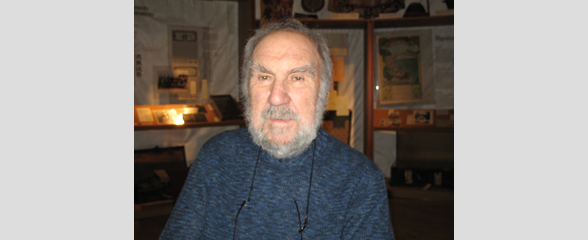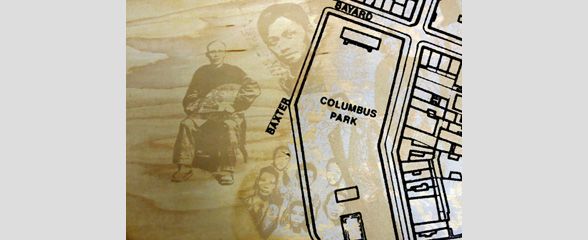World War

2008.040.006 Oral History Interview with Bert Feinberg December, 21, 2008
Bert Feinberg, native to Brooklyn and long-term resident of New York, describes his experiences in Chinatown and the block often referred to as the Daily Forward block, colloquially named after the Yiddish Daily Forward newspaper. There, Feinberg was employed at a family-owned catering and restaurant business called the Garden Cafeteria. During his time at the Cafeteria between 1949 and 1974, he saw significant demographic changes in the neighborhood. Feinberg initially estimates that the Daily Forward block was ninety percent Jewish residents and businesses. By the sixties, and more so the seventies, he observed significant geographic and demographic expansion in Chinatown due to the influx of Chinese immigrants establishing residency and businesses there. Feinberg recalls the unique mixture of customers who frequented the Cafeteria, such as clientele from the Workmens Circle and the Daily Forward, who created a close-knit community within the restaurant. However, as housing became more expensive and long-established businesses relocated or sold their property, the Jewish community gradually dissipated and disappeared. Feinberg ponders whether Chinatown will experience similar changes as the once predominantly inhabited Jewish community, as he has noticed that with increasing gentrification and higher education, younger Chinese generations are choosing professional careers over sustaining family businesses.

2008.040.013 Oral History Interview with Larry Goodman December 16, 2007
Larry Goodman, todays owner of his familys corporation Grand Machinery Exchange, Inc., recounts how his first generation Polish grandfather founded the company in 1927. Goodmans father Jerry and uncle Isidore took control of the business in 1947, and Larry Goodman later succeeded his father in 1983. According to Goodman, Centre Street machinery dealers were predominantly Jewish and were often afraid of non-Jewish “outsiders.†These business men were concerned with gaining respect and carried physical and psychological hardships because of this work ethic. Goodman also recalls the mixture of unity and intense competition between Jewish and Italian machinery dealers, the whole of which was referred to as the “forty thieves,†since most of the dealers were considered unrefined and were occasionally accused of having questionable business ethics.
Goodman reminisces about Chinatown as the industrial center of Manhattan, where he saw gradual sociological changes between the 1950s and 2000, including industry, hardware, and supporting retail spaces systematically leaving the area. Goodman sold the Grand Machinery Exchange shop building in 2005, explaining that business was no longer viable on Centre Street. He also notes the growing presence of Chinese-owned businesses on Centre Street, incorporating the neighborhood as a part of Chinatown rather than SoHo. Goodman reflects on how Centre Street has cycled through machinery and manufacturing, the garment industry, living-working spaces for creatives, and now finally to expensive developments. Furthermore, when asked to imagine the future of Chinatown, Goodman argues that money will dictate the outcome as part of a natural economic cycle. In his eyes, wealthy populations will move into the area, demand more luxury services and support and retail to accommodate their lifestyle and living spaces, and replace “mom and pop†establishments that can no longer afford to remain there.